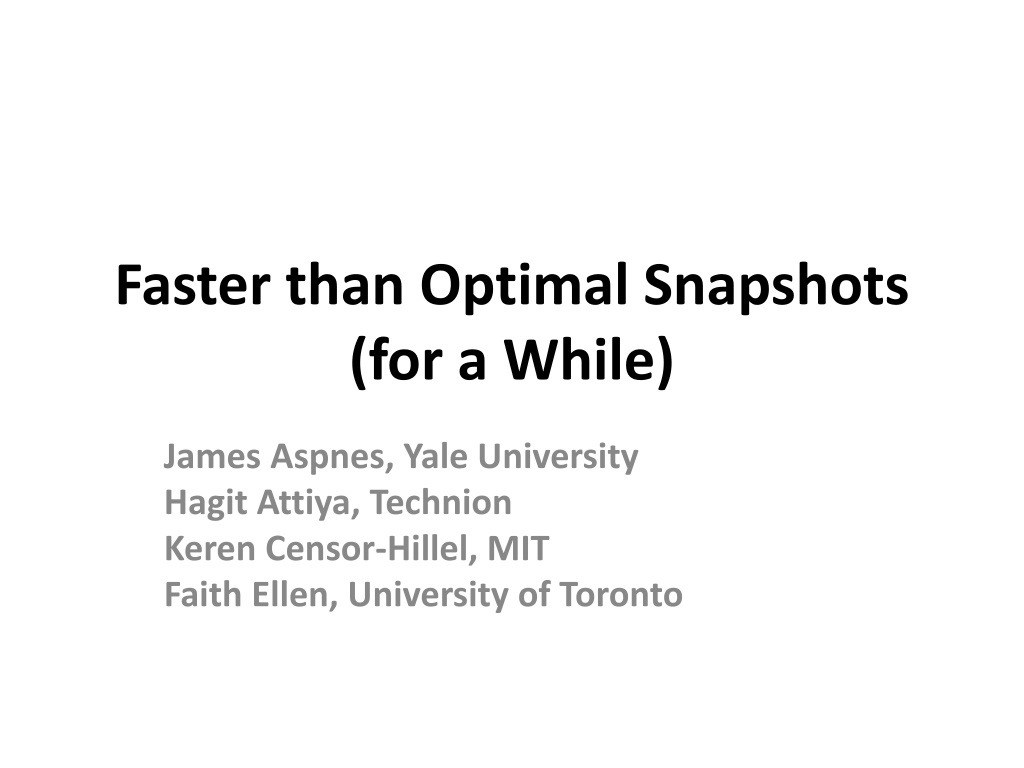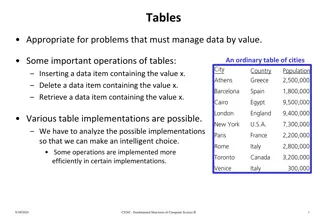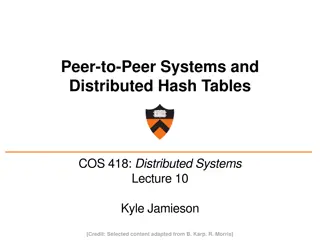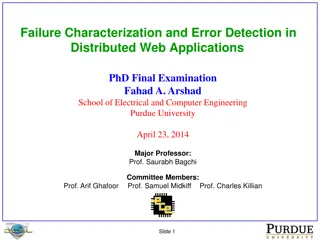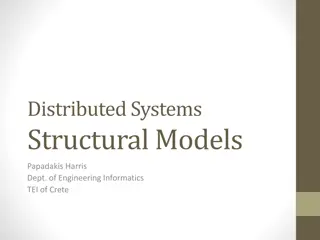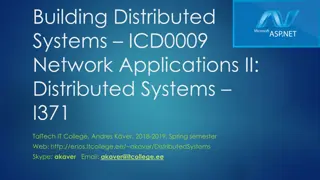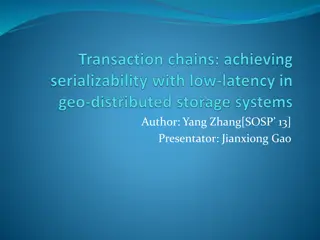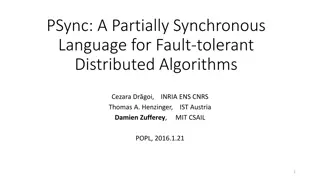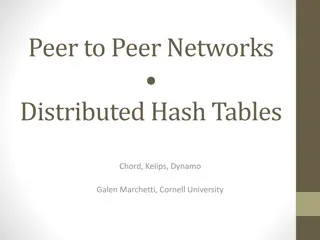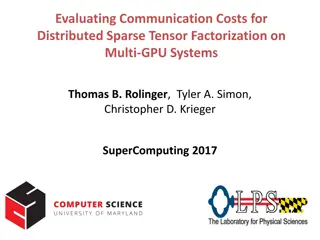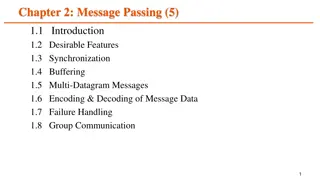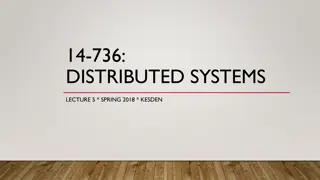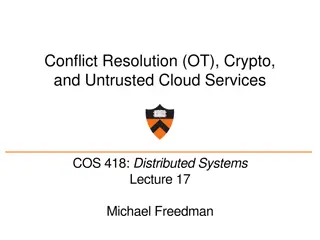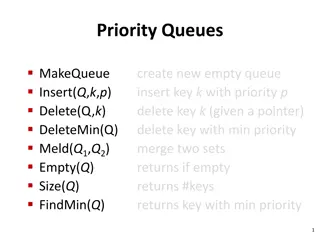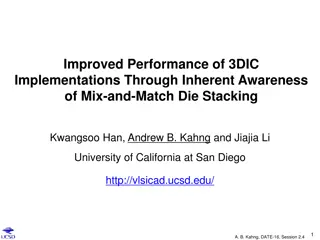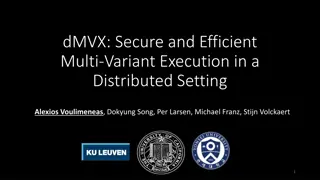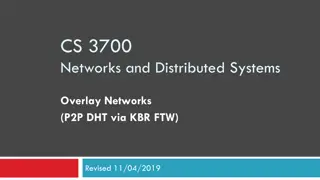Efficient Snapshot Implementations in Distributed Systems
This content discusses various snapshot implementations in distributed systems, focusing on achieving faster and sub-linear snapshot complexity. It covers topics such as multi-writer registers, tree structures, polylogarithmic snapshots, and the challenges of ensuring consistency across processes. The discussion emphasizes the need for efficient algorithms to handle slow operations and maintain synchronized views across different processes.
- Distributed Systems
- Snapshot Implementations
- Multi-Writer Registers
- Tree Structures
- Consistency Maintenance
Download Presentation

Please find below an Image/Link to download the presentation.
The content on the website is provided AS IS for your information and personal use only. It may not be sold, licensed, or shared on other websites without obtaining consent from the author. Download presentation by click this link. If you encounter any issues during the download, it is possible that the publisher has removed the file from their server.
E N D
Presentation Transcript
Faster than Optimal Snapshots (for a While) James Aspnes, Yale University Hagit Attiya, Technion Keren Censor-Hillel, MIT Faith Ellen, University of Toronto
Snapshot Objects scan update(v) update your location p1 p2 pn 2
Model System of n processes, m multi-writer registers Asynchronous schedule controlled by an adversary Crash failures require wait-free implementations Linearizable implementations R1 R2 Rm read write(v) v ok p1 p2 pn 3
Snapshots - Step Complexity Using multi-writer registers: can be done in O(n) steps [Inoue and Chen, WDAG 1994] and requires (n) steps [Jayanti, Tan, and Toueg, SICOMP 1996] Goal: a faster snapshot implementation (sub-linear) This talk: snapshot implementation in O(log3(n)) steps per operation for polynomially many update operations (limited-use snapshot object) 4
Tree structure, Updates help Scans Array of views Pointer to array location 5 s1+...+s4 s1+s2 s3+s4 s1 s2 s3 s4 5
Polylogarithmic snapshots Max register: returns largest value previously written [Aspnes, Attiya, and Censor-Hillel, JACM 2012] Need to cope with slow operations: use a max register 5 s1+...+s4 s1+s2 s3+s4 s1 s2 s3 s4 6
Polylogarithmic snapshots To guarantee that a view location always holds the same view, different processes need to sum up two max registers in a comparable way 5 s1+...+s4 s1+s2 s3+s4 s1 s2 s3 s4 7
2-component max array max 1 max 2 update(v,1) update(v,2) scan p1 p2 pn 8
2-component max array Simply reading one max register and then the other does not work 4. p3 read 0 5. p2 write(100) 6. p1 read 100 1. p1 read 0 2. p2 write(100) 3. p3 read 100 max 1 max 2 p1returns(0,100) p3returns(100,0) 9
2-component max array Read max registers again to see if they change Might change many times What if they were only binary? (0,0) and (1,1) are comparable with any pair If you see (0,1) or (1,0) read again 4. p3 read 0 5. p2 write(100) 6. p1 read 100 1. p1 read 0 2. p2 write(100) 3. p3 read 100 max 1 max 2 10
Max register recursive construction [Aspnes, Attiya, and Censor-Hillel, JACM 2012] MaxRegk supports values in {0, ,k-1} Built from two MaxRegk/2 objects with values in {0, ,k/2-1} and one additional multi-writer register switch =1 WriteMax t t < k/2 ? = ? switch t-k/2 t ReadMax t t switch=0 : return t MaxRegk/2 MaxRegk/2 switch=1 : return t+k/2 MaxRegk 11
MaxRegk unfolded MaxRegk switch Complexity does not depend on n: WriteMax and ReadMax in O(logk) steps switch O(logk) switch switch MaxReg0 MaxReg0 MaxReg0 MaxReg0 MaxReg0 0 1 2 k-1 12
A 2-component max array Write v,1 v,2 = ? Read switch MaxReg xx x=ReadMax component 2 switch=0 : WriteMax(x,2) to left subtree Return (Read left subtree) MaxRegk/2 MaxRegk/2 switch=1 : MaxRegk MaxReg MaxReg x=ReadMax component 2 WriteMax(x,2) to right subtree Return (k/2,0)+(Read right subtree) 13
A 2-component max array Key idea: a reader going right at the switch always sees a value for component 2 that is at least as large as any value that a reader going left sees Write Read switch MaxReg x=ReadMax component 2 switch=0 : WriteMax(x,2) to left subtree Return (Read left subtree) MaxRegk/2 MaxRegk/2 switch=1 : MaxRegk MaxReg MaxReg x=ReadMax component 2 WriteMax(x,2) to right subtree Return (k/2,0)+(Read right subtree) 14
A 2-component max array unfolded MaxRegk switch MaxReg Complexity is O(logk log ) steps switch MaxReg switch switch MaxReg MaxReg MaxReg0 MaxReg0 MaxReg0 MaxReg0 MaxReg0 MaxReg MaxReg MaxReg MaxReg MaxReg 15
Summary For b-limited use snapshot we get O(log2b logn) steps This is O(log3(n)) steps for polynomially many updates Paper also shows: Multi-writer snapshot implementation: every process can update each location c-component max arrays Open problems: Snapshot implementations using single-writer registers Lower bounds Randomized implementations and lower bounds 16
